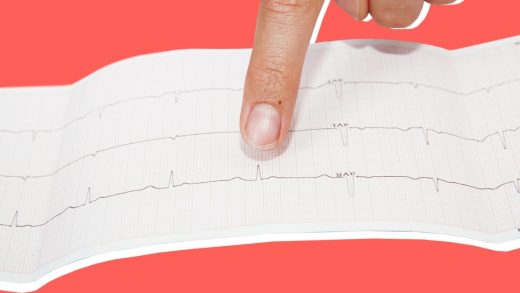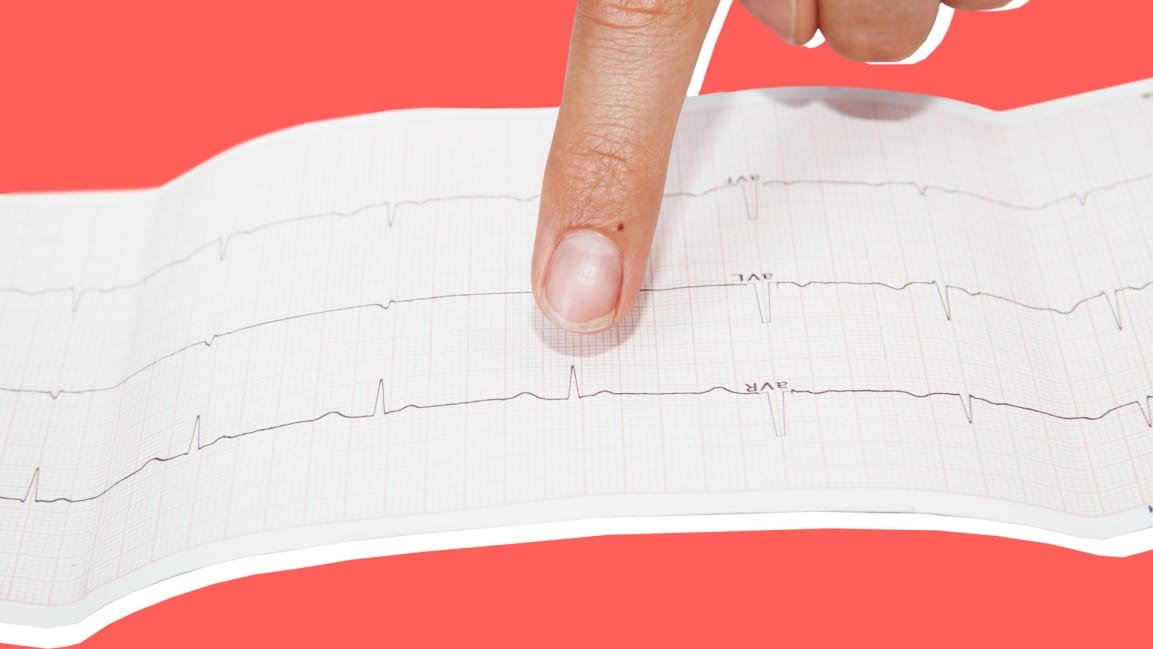When your body calls time-out
It was early February 2017. It had been a stressful morning at work. I was coming back from lunch and walking up the stairs to my third-floor office when I started to feel light-headed. I was out of breath, and my heart was racing. I asked my assistant to come in to my office. She took my pulse and said we needed to call an ambulance.
The paramedics arrived and informed me that I was in arrhythmia. They put me on a stretcher and wheeled me out of the office. I didn’t realize it at the time, but this moment would change everything. For the first time in my life, I was truly scared of dying.
How could this be happening? I was only 50 years old. I had passed my executive physical a few weeks earlier with no issues. We discussed stress, and I said it didn’t bother me. I had no idea what was really happening to my body.
I was diagnosed with A-fib (or atrial fibrillation), a common heart issue that essentially means my heart was out of synch. The bottom of my heart was beating very fast to try and keep up with the top of my heart, which was beating even faster. I was in the hospital for two days before my heart rhythm returned to normal.
I returned home to rest for a few days with a prescription to prevent the A-fib, yet my heart kept going back into arrhythmia, with each time lasting about two days. My doctors told me not to worry, that it wouldn’t kill me, but that’s how it felt each time. Eventually the doctors recommended that I have cardiac ablation surgery to correct the electrical signals in my heart. As I lay in the hospital bed the evening before the procedure, the doctor came in and asked for my signature—an acknowledgement that I might die in surgery.
After recovering from surgery for a few days, I was cleared to go back to work. But as I sat at my kitchen table that first morning about to head into the office, something was wrong. I didn’t want to go. Not only that, I didn’t want to leave my house. I didn’t know why, but I was really scared.
I called my doctor, and he suggested that I come into the office and meet with the staff psychologist. The diagnosis was cumulative stress anxiety disorder. The stress of being a CEO had taken its toll. The analogy I was given was that of a runner who eventually wears out their knees. Except I wore out the nervous system in my body.
My doctor recommended medication and cognitive behavior therapy. I was willing to do anything to make the feeling go away. Anything to get my life back to “normal.”
Coming to terms with anxiety
The anxiety affected me in ways I could have never imagined. My symptoms would increase just thinking about walking up stairs. Crowded restaurants and stores made me very uncomfortable, and watching a movie in the theater with loud noises caused my body to shake.
I started taking medication and seeing a psychologist who specialized in treating anxiety and learned a lot about myself. I had to come to grips with three really difficult concepts:
I was not in control. I had spent my whole life solving problems. The first thing I said to my therapist is “How do I fix this?” But anxiety doesn’t work that way; the more you try to fix it, the worse it gets. The first step is to accept anxiety for what it is—to learn to live with it. I had to give up control.
The old me wasn’t coming back. After a few weeks of therapy, I asked my psychologist “When do you think the old me is coming back?” She told me that the “old me” wouldn’t come back, but that if I stuck with therapy, I’d discover a “better me.” The problem was, at the time, I liked the old me.
It was time for some life changes. After 16 years of running Cree, a $1 billion company, my body had called a time-out, and it was time to listen. I needed to take a break.
Over the next 18 months, I learned how to use therapy to “retrain” my brain. And I developed several new habits to manage stress in different ways.
Practice mindfulness: I needed to learn how to be present, to find a way to break the cycle of stress and let my brain and body relax for a few minutes during the day. I now practice yoga daily and meditate at least twice a day—more when needed. Sometimes the stress is triggered by something big, like a friend dealing with a health issue, but more often it’s something simple like dealing with a travel delay or overscheduling my day. When I feel the tension building and my jaw starts to tighten, I know it’s time to sit quietly and focus on my breathing.
Focus on what really matters: I learned to focus on one thing at a time, something that I value. I learned to be honest about what I really value, which is not where I had been spending my time and energy. When I’m having dinner with friends, I now focus on enjoying the conversation, instead of checking my phone or processing the things I need to do later that evening.
Disconnect for part of each day: Being connected all the time creates stress, and attempts at multitasking only make it worse. I now limit my screen time and turn off all devices a couple of hours before bed each day. I also spend time walking without any music or artificial noise, taking in what’s around me while letting my thoughts wander, which has also fueled creativity.
Learn self-compassion: I was my harshest critic. There is nothing wrong with having high standards, but at some point you have to learn to give yourself a break. To treat yourself with kindness. I regularly remind myself that there’s a big difference between accountability and guilt.
Eliminating the stigma
While I was still running Cree, I felt like I needed to battle my anxiety disorder. The first person I talked with was sympathetic but suggested that I not tell anyone else at work. They believed that others on the team might not be comfortable working for a CEO who had a mental health issue. I was stunned by the feedback. This sort of mentality, pervasive though it may be, is a real problem. As a leader, you’re not supposed to show weakness. You’re supposed to be above it all.
But this is the kind of attitude that makes you put off seeking help that could have addressed the issues, before your body is forced to take more drastic action.
As I found the “better me,” I came to understand that mental health is not something to be ashamed of. It’s a very real—and more importantly, a very treatable—medical issue. And like many medical issues, it becomes part of your life. Nearly 20% of Americans will have treatable anxiety in their lifetime, but only a third will seek treatment. If you add in depression and other mental health issues, the number goes far higher.
I no longer wish for the old me. I’ve learned a lot about myself, and I’ve never been happier. In the end, the time-out was a gift. I’ve learned to be present and to appreciate life and the people around me in ways that I couldn’t before.
Chuck Swoboda is the former chairman and CEO of Cree, Marquette University’s Innovator-in-Residence, a podcast host, and an author. He is driven by the belief that innovation is fundamentally about people, not process.
(5)



